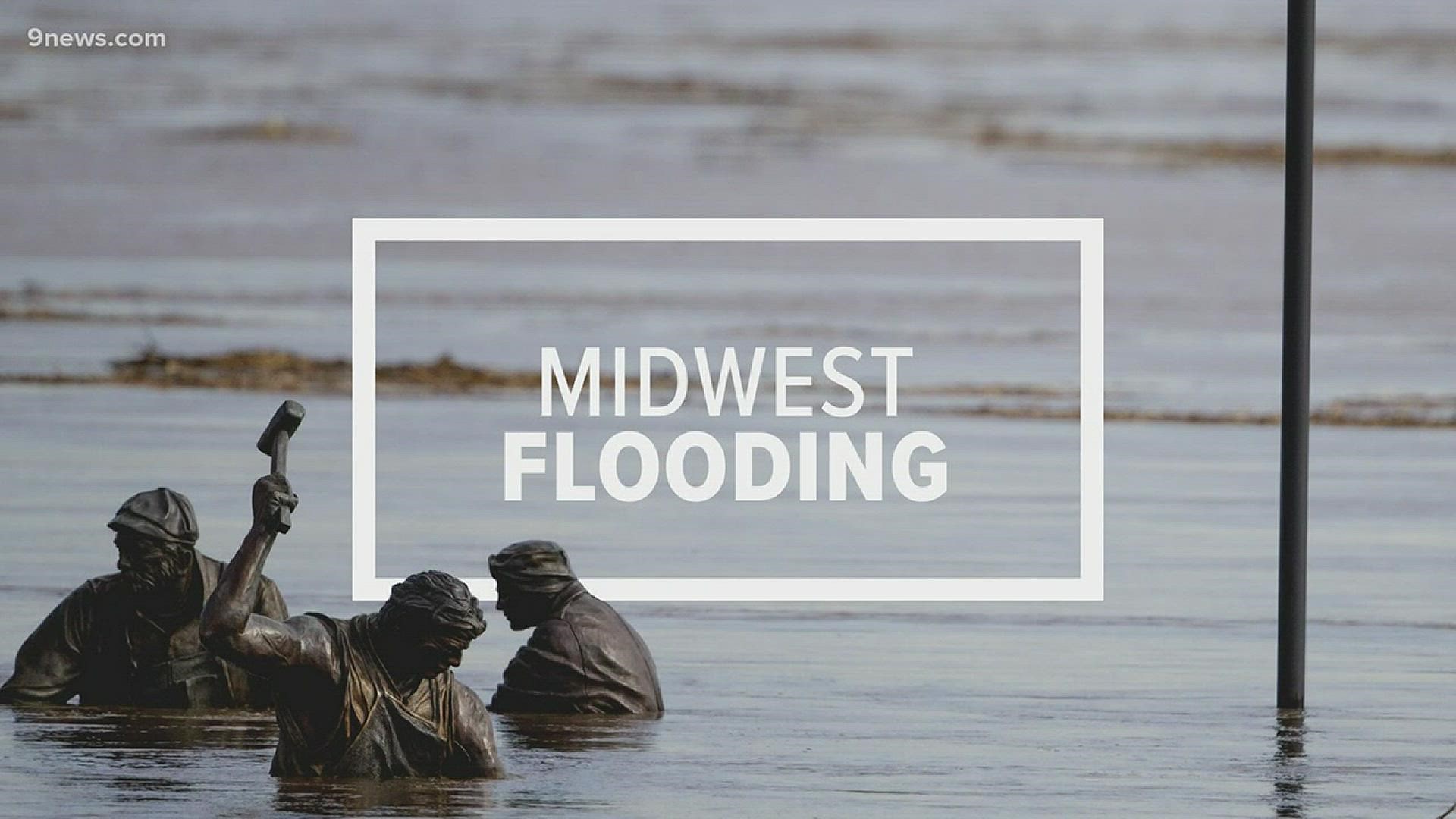DENVER — Parts of Nebraska are seeing the biggest flood in more than 50 years. Other states in the region are also flooded, while areas downstream brace for the water that is still to come.
The powerful and record-breaking bomb cyclone is to blame for the flood, but other factors contributed, including the weather conditions prior to the storm.
Here are the ingredients that created this flood:
Widespread precipitation
Although the bomb cyclone did not drop a particularly heavy amount of precipitation on any one area -- mostly between 1.5 and 3 inches of water -- it did cover an impressive amount of land. It covered a large portion of six states with those precipitation totals.
That still may not have been enough water to create the type of flooding that we are seeing though.
Snowpack
Melting snow was another big factor.
Satellite photos on March 11 showed widespread snow cover across most of Nebraska. One sunny day and then the rain from the bomb cyclone melted that snow.
Rapid snow melt, combined with the rain from the bomb cyclone, started to fill the rivers.
Ice Jams
Then, add the ice jams. Massive chunks of ice freed by rain and swift currents created dams along the river systems. Fifty acres of giant ice blocks were left on Jared Jaixen's pasture after the flood moved through Loup City, Nebraska.
Water pools behind these jams. When they finally break through, the rivers run higher, faster, and are filled with these destructive ice chunks.
Previous weather conditions
The final ingredient was the frozen ground. The first 10 days of March were cold and February was even worse. Places like Omaha were coming off of their snowiest February on record, and ninth coldest.
Cold icy earth is not as permeable as warm ground, which allows water to run on the surface with little to be absorbed.
SUGGESTED VIDEOS | Local stories from 9NEWS


